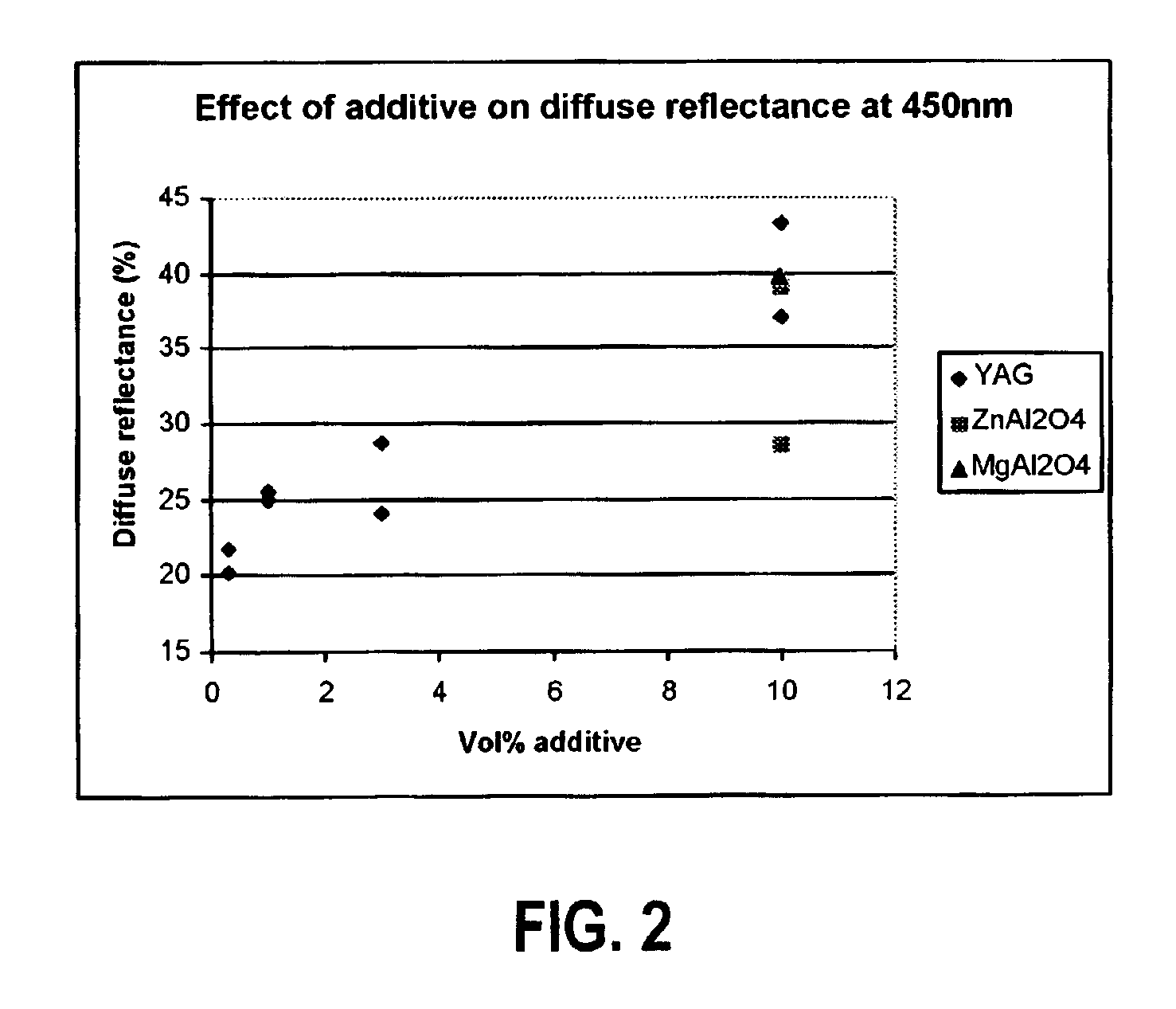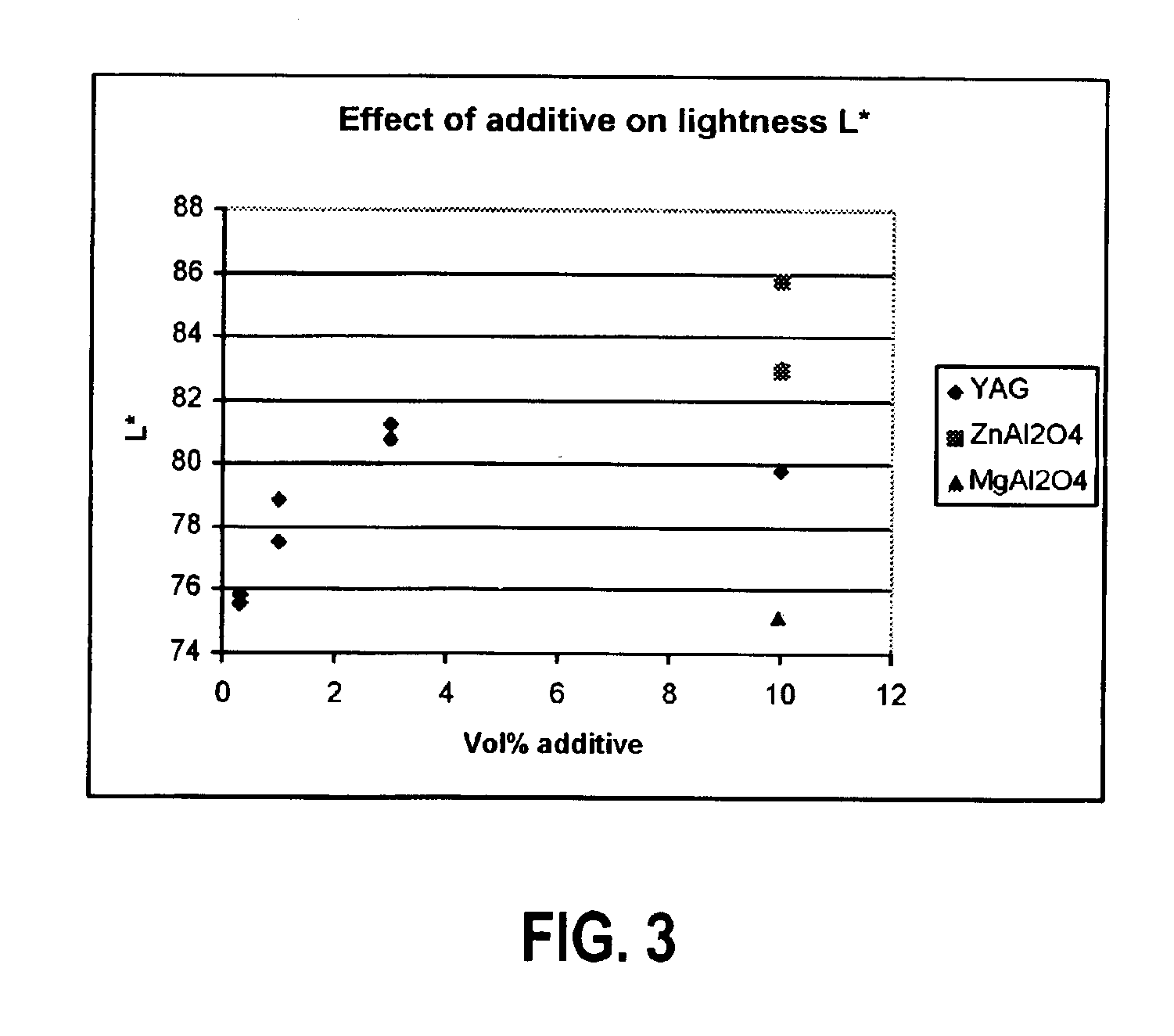Light-colored ESD safe ceramics
- Summary
- Abstract
- Description
- Claims
- Application Information
AI Technical Summary
Problems solved by technology
Method used
Image
Examples
example 1
[0040]Powders of 3 mole percent yttrium oxide stabilized zirconia, zinc oxide, and yttrium aluminum garnet were mixed in the ratios of 70 weight percent, 17.5 weight percent, and 12.5 weight percent respectively. A reference having 82 percent yttrium stabilized zirconia and 18 percent zinc oxide was also prepared. The reference and sample were pressed into pellets, fired at 1400° C. for one hour, and hot isostatically pressed at 200 MPa in argon for 45 minutes at 1350° C. This process yielded a sample and reference with relative densities greater than 98 percent. The samples where then annealed in air at 650° C. until the surface resistance exceeded 2 MΩ. The surface resistance was measured with a PRF-912 surface resistance probe from Prostat Corp. of Bensonville, Ill. The results are presented in the table below.
[0041]
SampleZrO2—Y2O3ZnOYAGSurface resistance (MΩ)Reference (no821802.4YAG)S17017.512.54.5
[0042]The diffuse reflectance from the sample and reference was measure with a Min...
example 2
[0044]A number of samples were prepared using the same processing cycle as Example 1. The compositions of the samples are shown in the table below. In each case, the balance of the material is a mixture of 18.7 weight percent zinc oxide and 81.3 weight percent zirconium oxide. The last column of the table indicates that volume fraction of the scattering material additive, assuming no significant mutual solution of the scattering material and the other constituents of the samples. Extra zinc oxide was also added with the additive to hold the volume fraction of zinc oxide at 20 percent, again ignoring mutual solubilities.
[0045]
wt % ZnOadded to mix towt %wt %wt %maintainEq. vol %Sample IDYAGZnAl2O4MgAl2O420 vol % ZnOadditiveRM3-10.230.070.3RM3-20.230.070.3RM3-50.780.241RM3-60.780.241RM3-92.360.713RM3-102.360.713RM3-137.992.4110RM3-147.992.4110RM3-237.922.4110RM3-256.272.4110
[0046]After the hot isostatic pressing cycle, the sample faces were ground and the samples were heated in air at ...
PUM
| Property | Measurement | Unit |
|---|---|---|
| Grain size | aaaaa | aaaaa |
| Grain size | aaaaa | aaaaa |
| Grain size | aaaaa | aaaaa |
Abstract
Description
Claims
Application Information
 Login to view more
Login to view more - R&D Engineer
- R&D Manager
- IP Professional
- Industry Leading Data Capabilities
- Powerful AI technology
- Patent DNA Extraction
Browse by: Latest US Patents, China's latest patents, Technical Efficacy Thesaurus, Application Domain, Technology Topic.
© 2024 PatSnap. All rights reserved.Legal|Privacy policy|Modern Slavery Act Transparency Statement|Sitemap



